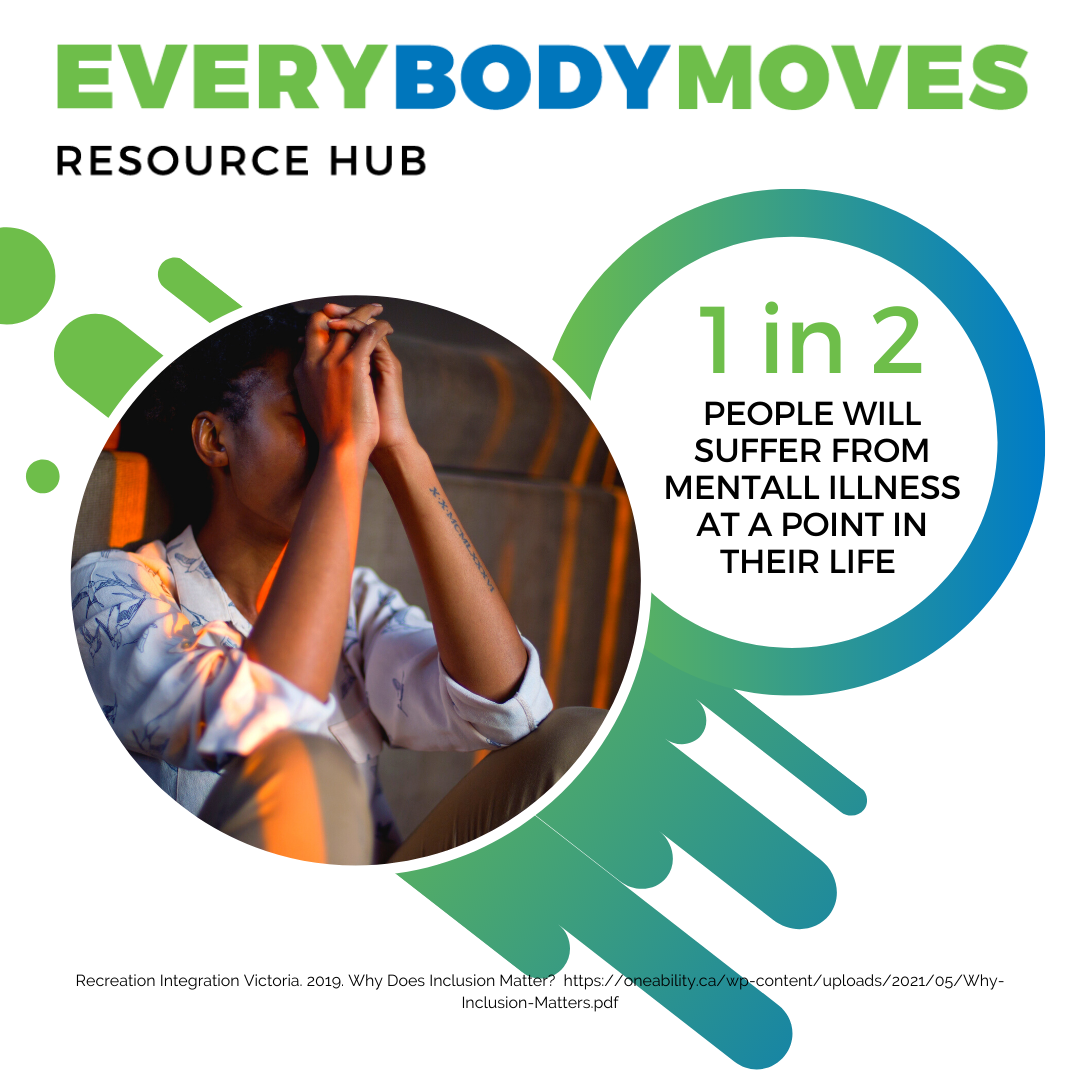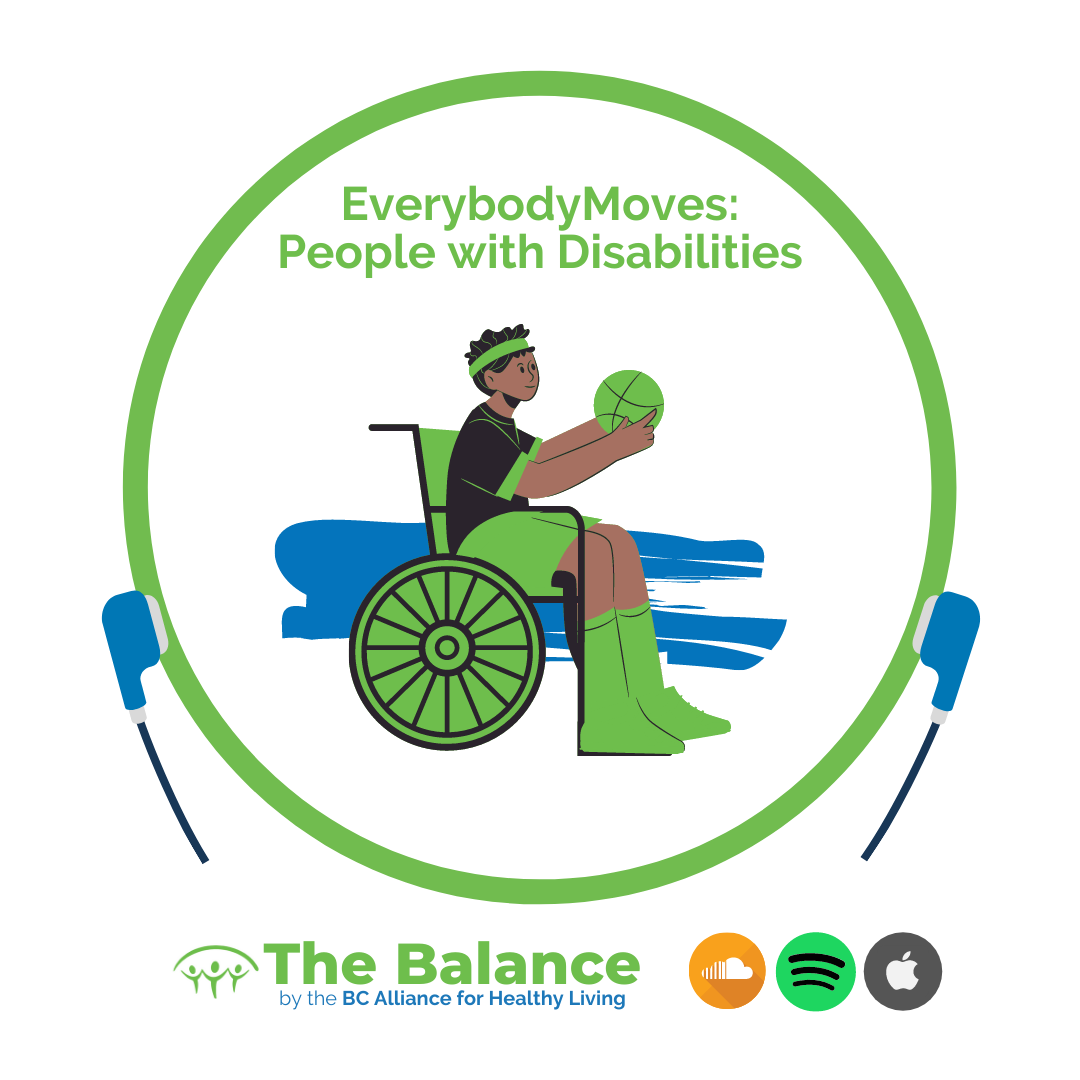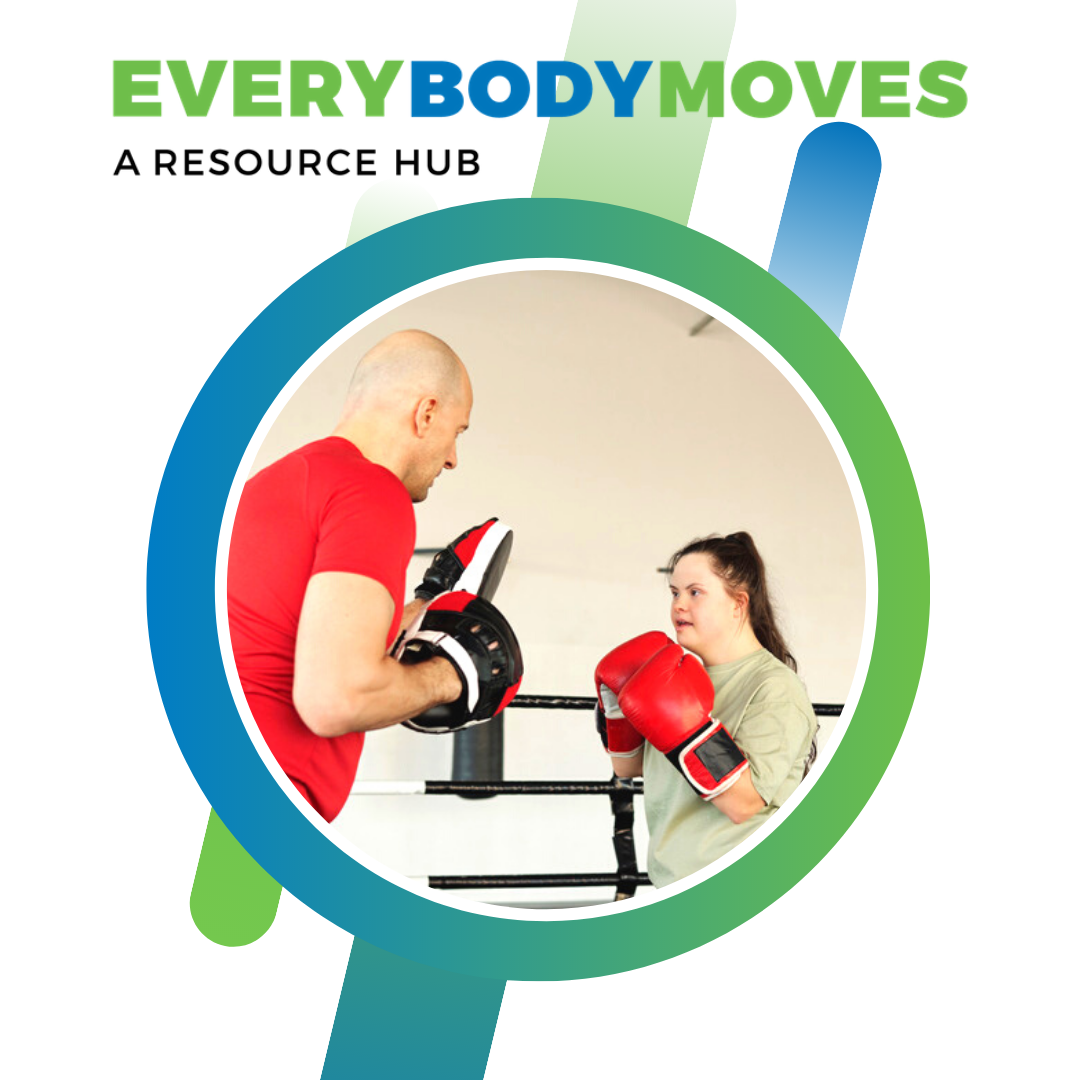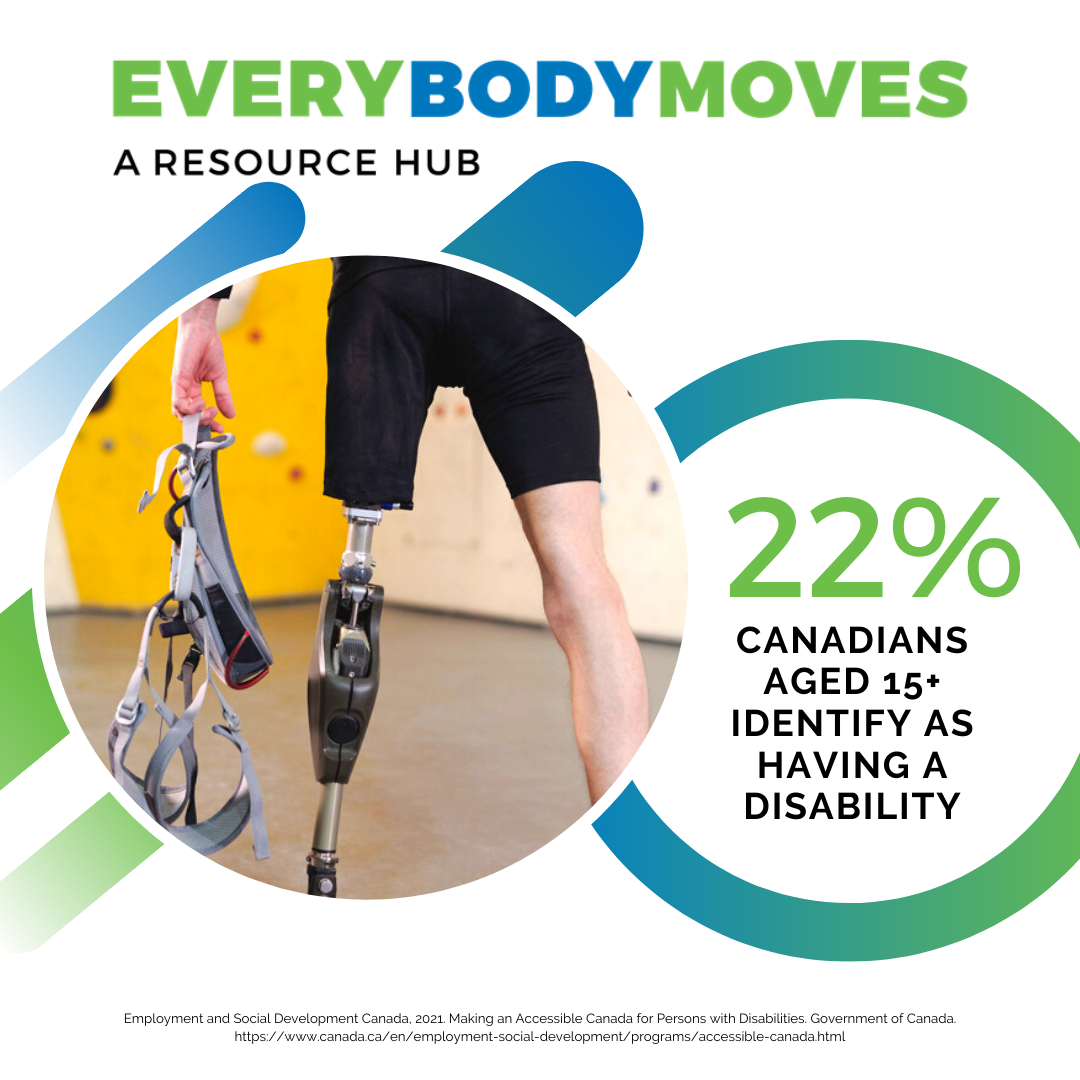
When we take care of our bodies, we take care of our minds. This intersection highlights why it’s so important to create equitable opportunities in sport and recreation spaces: because physical activity enhances physical, mental, and emotional health.
As the days get longer and warmer, and COVID-19 restrictions continue to ease, there are more chances for us to get out and get moving. There are also more chances for sport and recreation leaders to encourage people to participate in physical activity programs.
This Mental Health Week, the Physical Activity for Health Collaborative invites sport leaders, coaches, educators, and recreation leaders to utilize the EverybodyMoves Resource Hub. The Hub offers a collection of resources to help leaders and decision-makers create equitable, safe, and accessible sport facilities and spaces for people of all ages, abilities, and backgrounds. When physical activity is accessible and inclusive, mental well-being becomes more balanced for everyone.
Physical health and mental health are very closely related, with research showing that physical activity helps relieve stress. Moving and exercising helps the body release endorphins and other chemicals that help reduce the feeling of pain and boosts mood.
When we encourage movement, we encourage mental wellness. When we encourage mental wellness, we encourage healthy living on a holistic level for everyone.
Featured Resources
We Belong: A How-To Guide aims to provide recreational leaders, coaches, educators and facilitators practical tools to help newcomer youth feel welcomed and included in physical activity settings. Developed by PHE Canada.
Good Practices for Creating Gender-Equitable Boards in Sport
Canadian Women & Sport (formerly The Canadian Association for the Advancement of Women in Sport and Physical Activity -CAAWS), supports and champions Sport Canada’s objective of achieving gender equity in sport at all levels by 2035. CAAWS believes it begins at the top: ensuring gender-equitable boards of directors. This resource provides sport leaders with information including a checklist and tips on how to create gender-equitable boards.
PlanH provides a guide to support local governments as they build healthy communities throughout the province. Social connectedness makes people feel included and like they belong, which in turn encourages them to keep participating in recreation, sports, as well as other community activities that make them active and healthy.
Inclusive Physical Literacy Webinar
This webinar delivered by Andrea Carey of OneAbility introduced the concept of inclusive Physical Literacy, including how to offer inclusive programming and how to plan intentionally for inclusive programming and how to provide a supportive and welcoming environment for a person with a disability.

Sian Blyth, the Executive Director of the BC Wheelchair Basketball Society, explores how physical activity can be more accessible and inclusive for people living with disabilities.
Listen to the episode on SoundCloud, Spotify and iTunes.
Show Notes:
The Balance is recorded and produced by BCAHL’s Communications Manager on the traditional, unceded territories of the xʷməθkʷəy̓əm (Musqueam), Skwxwú7mesh (Squamish) and səl̓ilwətaʔɬ (Tsleil-Waututh) Nations.
Thank you so much for listening.
Episode Links:

Simran Patel just finished her first meeting at a community Sports Council, and is feeling excited yet perplexed. Although the council is comprised of some very experienced fitness and health professionals, all of its members are non-disabled. She wants to ensure that the physical activity programs can attract people of all abilities. Simran is considering what she might propose to the council to get more people with disabilities involved, but isn’t sure what practical steps to take.
More than 6 million Canadians aged 15 and over identify as having a disability. The World Health Organization determines that most people will experience a disability to varying degrees in their lifetime.
People with disabilities experience stigmatization and discrimination, which affects their opportunities to be physically active.
People living with disability are at least twice as likely to be inactive, compared to people who are non-disabled. For example in Victoria, BC, only 3% of adults with disabilities are moderately physically active, and 53% of youth with a disability experience barriers to leisure activities.
However, there are major benefits for people living with disabilities to being physically active: they gain a greater sense of belonging, become stronger, and more confident. Moreover, physical activity reduces the risk for chronic disease and comorbities, while increasing mental and social well-being.
On a community level, inclusive and accessible sports can positively change the community's perceptions of people living with disabilities by focusing attention on abilities and achievements. Moreover, families feel more supported which can counter the isolation and negative attitudes that people living with disabilities face.
As sport, recreation and community leaders, we have the responsibility and opportunity to continue making physical activity as inclusive and accessible as possible for people of all abilities.
After reading the First Involvement in Sport and Recreation infographic, Simran realized that the community centre they held the council meetings at were not specialized in creating a welcoming, accessible and safe space for people living with disabilities. After informing the Sports Council, they decided to have an open conversation with the community centre facilitators to ensure all staff and volunteers were adequately informed and trained in creating accessible spaces. Simran then asked front-line staff to promote the Sports Council to the community, with an emphasis on valuing and celebrating diverse abilities.

Resources
EverybodyMoves has resources specifically focused on people living with disabilities. Look through the resources below, or check out the hub for even more! If you see a resource missing, submit it here. We want the Hub to house as many resources on inclusive and accessible physical activity as possible!
What To Do When You Meet a Person With a Disability
This infographic is part of a series of posters that create inclusion, raise awareness, promote and educate the public on active living and disabilities. OneAbility and Recreation Integration Victoria have created the 'Disability & Diversity: Education to Promote Active Living' project infographics. These posters are available for you to browse, download, read, distribute and display.
Modifications and Adaptations on Common Games and Activities
Let's Play offers these easy adaptations (for equipment, skills, rules and facilities) to common games and activities familiar to children. You will see how quickly activities you currently use can be made inclusive for everyone.
Disability Tip Sheet
The Active Living Alliance for Canadians with a Disability created a series of Tip Sheets to provide information about disabilities and conditions to help leaders in the physical activity, recreation and sport sectors be inclusive.
